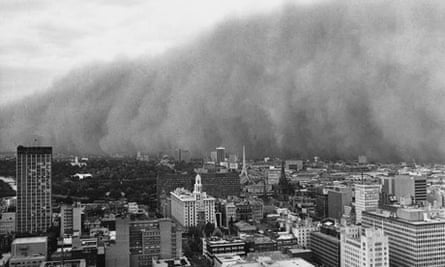The world's most devastating global weather phenomenon – the weather events associated with "El Niño" – will double in frequency to once a decade if global warming remains unchecked, according to what scientists believe is a major step forward in the understanding of such events.
The last extreme El Niño, in 1997-98, resulted in the hottest year on record, and the accompanying floods, cyclones, droughts and wildfires killed an estimated 23,000 people and caused £21bn-£28bn in damage, particularly to food production. But until now scientists have been unable to agree how climate change will affect the frequency of extreme El Niños.
A study, published in the journal Nature Climate Change, concludes that in stark contrast to earlier work, the current rate of carbon emissions would mean twice as many extreme El Niños over the next 100 years, with profound socioeconomic consequences.
"This is a highly unexpected consequence of global warming," said Professor Mat Collins of the University of Exeter, part of the research team. "Previously we had thought that El Niño would be unaffected by climate change. Tropical rainfall conditions such as those experienced in extreme El Niños have a dramatic influence on the world […] the impact therefore on mankind is substantial."
Another team member, Professor Eric Guilyardi of the University of Reading, said: "This research is the first comprehensive examination of the issue to produce robust and convincing results about extreme El Niños."
El Niños begin with an unusual warming of the sea surface at the tropics of the eastern Pacific and spread to affect many parts of the world. Previous attempts to ascertain the effect of climate change were inconclusive, as different computer climate models produced conflicting results.
By focusing on those models known to best represent the changes in temperature, currents and clouds that occur in the real world, the researchers were able to produce a clear result for the first time. The work showed that climate change is most likely to warm the tropical Pacific waters that drive El Niño more rapidly than surrounding regions, meaning that extreme events would become twice as common.
Professor Myles Allen, a climate modelling expert at the University of Oxford who is not involved in the work, said: "It is a very reasonable paper and a very sensible approach. In the past people said models disagreed on changes to El Niño, but a lot of models simulated El Niño very badly."
But he added: "I doubt it is the last word on the subject. It would be good to repeat this study with the computer models used for seasonal weather forecasting, which have higher spatial resolution than climate change models."
Allen said much more use should be made of weather forecasting models, which are very well funded and tested: "We'd get very interesting answers to questions like [the effect of warming on El Niño], which involves an interaction between weather and climate."

Collins agreed that the findings needed to be tested further. He said: "The climate system is likely to throw up these unexpected consequences of climate change and we are only just learning about them.
"This is essentially an 'irreversible' climate change phenomenon, and it would take a dramatic reduction in greenhouse emissions over a number of generations to reduce the impact. It is even more evidence that cutting emissions would be a good idea."
The most recent extreme El Niño events were in 1982-83 and 1997-98, when warm sea surface temperatures in the normally cool and dry eastern Pacific caused a massive reorganisation of global rainfall.
"Nations in the western Pacific experienced devastating droughts and wildfires, while catastrophic floods occurred in the eastern equatorial region of Ecuador and northern Peru," said Wenju Cai of the Commonwealth Scientific and Industrial Research Organisation (CSIRO) in Victoria, Australia, part of the research team.
Previous work showed that the impacts of El Niño events appeared to double the risk of civil wars breaking out.
